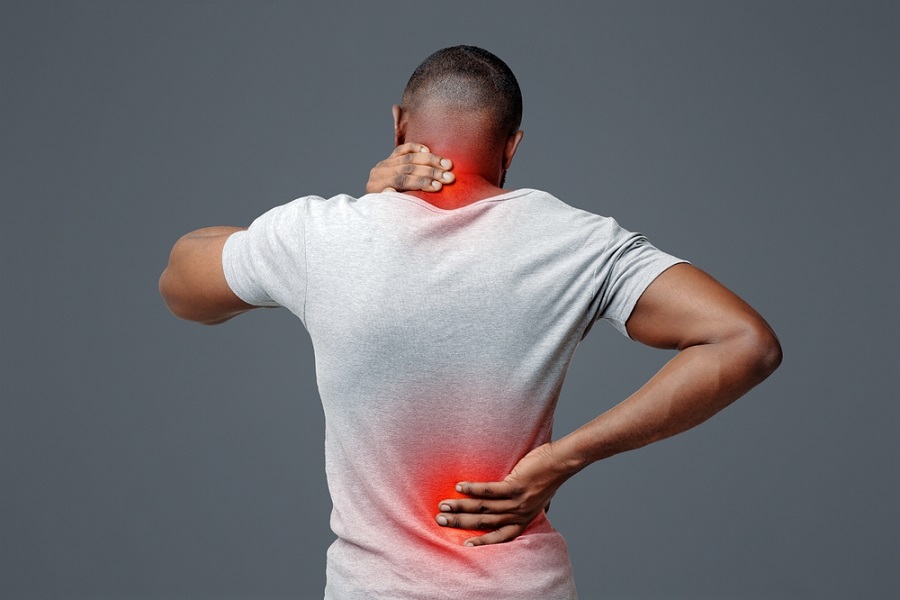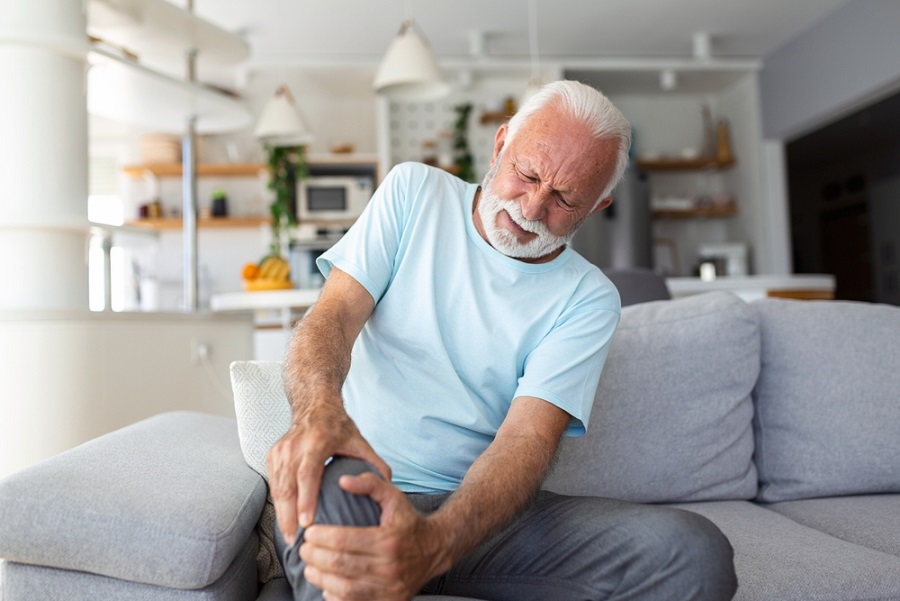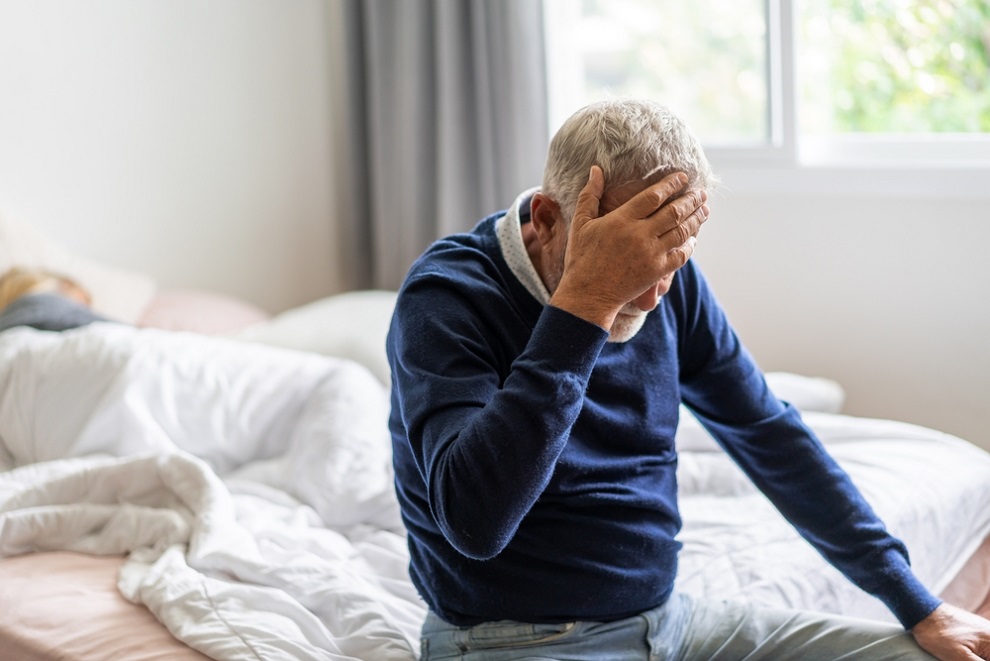- Chronic pain can be managed naturally through movement, stretching, and exercises that improve flexibility and reduce stiffness.
- Anti-inflammatory herbs like turmeric, ginger, boswellia, and essential oils offer gentle relief without relying on medication.
- Physical and occupational therapy restore mobility and daily function by focusing on safe movements and adaptive techniques.
- Stress management tools like deep breathing, guided imagery, and mindfulness reduce pain flare-ups and help the body relax.
- Acupuncture, tai chi, and electrical stimulation provide drug-free options that support long-term comfort and body awareness.
- A balanced diet, regular sleep, and consistent lifestyle choices build a foundation for better pain control and overall well-being.
Pain affects how people move, sleep, and function throughout the day. Whether short-term or chronic, pain can disrupt daily life and impact overall health.
For many, pain medicine brings relief. But not everyone wants to rely on painkillers long-term because of their side effects, tolerance, and risks. This has led more people to explore natural and integrative approaches that ease pain and support healing without masking symptoms.
Managing pain without medication does not mean ignoring treatment. It means taking a whole-body approach that strengthens mobility, reduces inflammation, and helps the body recover. From movement and nutrition to stress management and alternative therapies, there are proven ways to feel better naturally.
In many cases, restoring hormones like testosterone can help the body recover more effectively, manage inflammation, and maintain long-term strength. While this article focuses on ways to relieve pain without traditional pain medication, it also explains how hormone therapy can support the body's natural resilience.

What Causes Pain?
Pain is not always the same. It can come on suddenly or build over time. However, understanding what type of pain you're experiencing is the first step toward finding pain relief that works.
Acute pain happens quickly, often after an injury or surgery. It usually lasts a short time and improves as the body heals. On the contrary, chronic pain lasts for months or even years. It can persist even after the initial injury has healed. Some of the common causes of chronic pain include conditions like lower back pain and rheumatoid arthritis.
Nerve pain or neuropathic pain happens when the nerves are damaged or irritated. It may feel like burning, tingling, or shooting sensations. Joint pain often results from wear and tear or inflammation and is common in older adults and those with arthritis.
Pain signals travel through the spinal cord to the brain, where they are processed. This system responds to injury, but it can also become overactive. Some people still feel pain even after their injury has healed because their nerves continue to send pain signals.
Natural Pain Relievers
Many people look for natural pain relievers to avoid long-term use of medication. These options can help manage discomfort and support overall health.
Herbs That Help with Inflammation and Pain
Turmeric is widely known for its anti-inflammatory properties. It contains curcumin, which helps reduce pain and swelling.
A study conducted clinical trials and found that about 500 mg of curcumin daily for a month significantly reduced joint pain and stiffness in people with arthritis. The results were similar to standard pain medications, but without the side effects. It also improved physical function over time.
Boswellia, also called Indian frankincense, is another natural option to relieve inflammation, especially in conditions like arthritis. Ginger also works as an anti-inflammatory and may ease pain after physical activity. Willow bark, sometimes called "nature's aspirin," has been used for centuries for pain relief, especially for back pain and joint discomfort. These herbs don't work overnight, but regular use may offer relief over time.
Essential Oils
Certain essential oils can reduce muscle tension when applied topically or used in aromatherapy. Lavender oil may promote relaxation and reduce discomfort. Also, peppermint oil contains menthol, which can cool the skin and ease sore muscles. These oils support short-term pain relief without harsh side effects.
Dietary Supplements
Dietary supplements like Omega-3 fatty acids can help the body manage chronic inflammation. These healthy fats, found in fish oil and flaxseed, may reduce joint pain in people with arthritis. Keep in mind that supplements don't replace food, but they can fill in the gaps and support healing.
Foods That Reduce Inflammation
Consume a diet rich in leafy greens, berries, nuts, and fatty fish to reduce inflammation naturally. These foods contain antioxidants and nutrients that protect tissues and lower pain levels over time. Herbs like rosemary, cinnamon, and garlic may also provide anti-inflammatory effects.
Pain Management Techniques That Support Recovery and Function
Not all pain needs to be treated with medication. Several practical approaches can help reduce discomfort, improve movement, and support daily function. These methods work well on their own or alongside other care plans.
Physical Therapy
Physical therapy focuses on how your body moves, especially after injury, surgery, or long-term conditions.
One must consult a physical therapist who will create a treatment plan with exercises designed to improve flexibility, strengthen weak muscles, and restore joint function. These exercises help the body heal and reduce stiffness over time.
Better mobility improves posture, balance, and confidence in everyday activities. People with ongoing pain will find relief from a consistent therapy plan. It can also help prevent the return of old injuries.
Occupational Therapy
Occupational therapy supports people who struggle with daily activities due to injury, chronic pain, or physical limitations. Therapists guide patients through routines that promote independence.
They may teach new ways to perform basic tasks without causing extra strain. This method can improve the overall quality of life, especially when pain affects daily life.
TENS
Transcutaneous electrical nerve stimulation (TENS) offers another way to manage pain without medication. This small device delivers low-level electrical pulses to the skin.
These pulses help in blocking pain signals before they reach the brain. TENS is often used for back pain, joint discomfort, or post-surgery recovery. It's non-invasive and adjustable for personal comfort.
Relaxation Techniques
Stress can increase physical pain by tightening the muscles and raising tension in the body.
Simple relaxation techniques like deep breathing, guided imagery, and mindfulness-based practices can help calm the nervous system. Regular practice reduces emotional stress and improves how people cope with discomfort, making these methods easy to adapt to daily life, whether during pain flare-ups or before sleep.
Recent research supports their potential benefits. A systematic review published in Heliyon analyzed 29 randomized controlled trials and found that relaxation techniques, including deep breathing and guided imagery, significantly reduced chronic pain in most studies.
Alternative Procedures for Pain Relief
Some people look beyond medication to manage long-term pain. These alternatives may not yield immediate results; however, they can gradually help alleviate symptoms and enhance quality of life.
Acupuncture and Movement-Based Therapies
Acupuncture consists of inserting thin needles into designated points on the body. It's been used for centuries to relieve pain. Today, growing evidence supports its use for chronic conditions like low back pain and knee osteoarthritis.
A large-scale meta-analysis found that acupuncture offered better and lasting pain relief than placebo and standard care. Pain reduction held up even a year after treatment, making it a strong alternative for those seeking long-term pain relief.
Tai chi is another option that combines slow movement, breathing exercises, and balance. Consistent exercise may help alleviate joint stiffness and enhance flexibility, particularly in older adults or those with arthritis. Both acupuncture and tai chi offer gentle, body-focused approaches that help reduce reliance on pain medicine.
Mind-Body and Mental Health Approaches
Pain not only affects the body, but it also impacts mental health. That's why mind-body practices and psychological therapies can be useful.
Practices such as guided imagery, breathing techniques, and mindfulness meditation can lessen the brain's reaction to pain and assist in stress management. Psychological therapies like cognitive behavioral therapy (CBT) teach people to reframe their thinking. For some, these changes can lead to fewer pain flare-ups and better emotional resilience.
Electrical Stimulation and Other Options
Some people benefit from alternative therapies like electrical stimulation. This involves sending mild electrical currents through the skin to interfere with how the brain perceives pain. While unsuitable for everyone, it may offer another support layer in a broader pain management plan.

Lifestyle That Supports Pain Relief
Long-term pain can influence how you sleep, move, eat, and manage your day. That's why daily habits can make a big difference over time.
Engage in Regular Exercise
Regular exercise helps reduce pain and supports overall health. Movement keeps the body flexible, strengthens muscles, and improves blood flow. These changes help control inflammation and support the body's natural healing processes. Light activities like walking or stretching can improve function and reduce stiffness.
Consume a Balanced Diet
What you eat affects how you feel. A diet rich in processed foods can aggravate inflammation, while whole foods help the body repair.
Fatty fish, leafy greens, berries, and olive oil are known for their anti-inflammatory properties. These foods not only support pain relief but also improve energy and mood. Some people with low testosterone may also notice more aches and slower recovery. A balanced diet, such as proteins and healthy fats, can regulate hormones that affect pain levels.
Sleep and Stress Matter
Pain can make sleep difficult, but poor sleep can also increase pain sensitivity. You must create a steady sleep routine that gives your body time to rest and repair.
Limit screen time and caffeine intake before bed to help improve sleep quality. Stress makes pain feel worse. When the body stays in "fight or flight" mode for an extended period, it becomes harder to heal. That's where stress management plays a role.
Deep breathing, short walks, or simply pausing during the day can lower stress and support long-term pain control.
Make Suitable Lifestyle Changes
Lifestyle changes may not provide fast results, but they work well when used consistently. These habits lower the risk of flare-ups and improve how the body handles discomfort.
They also support better long-term health, which matters when managing persistent pain. In some cases, even with a healthy lifestyle, men may still struggle with persistent fatigue, low energy, or slow recovery due to low testosterone.
This is where Testosterone Replacement Therapy (TRT) from Male Excel may help. Their physician-guided hormone therapy is designed to restore testosterone to optimal levels, which can support muscle function, improve mood, and enhance the body's natural ability to manage pain and inflammation.
Conclusion
Managing chronic pain without relying on painkillers is possible when you focus on natural approaches that support the whole body. Regular exercise, better sleep, a balanced diet, and stress management can all reduce pain over time. Adding therapies such as stretching, physical or occupational therapy, and relaxation techniques can improve function and resilience day to day.
Sometimes persistent fatigue, muscle weakness, and slow recovery signal something deeper, such as low testosterone. In these cases, physician-guided hormone therapy may provide the missing link that helps your body manage inflammation, rebuild strength, and recover faster.
Male Excel has helped more than 100,000 men restore energy, confidence, and recovery through personalized testosterone therapy. Pain does not have to control your life. With the right mix of natural strategies and expert hormone support, you can take charge again and feel stronger at any age.
References
1. Shep, D., Khanwelkar, C., Gade, P., & Karad, S. (2019). Safety and efficacy of curcumin versus diclofenac in knee osteoarthritis: a randomized open-label parallel-arm study. Trials, 20(1). https://doi.org/10.1186/s13063-019-3327-2
2. Vickers, A. J., Vertosick, E. A., Lewith, G., MacPherson, H., Foster, N. E., Sherman, K. J., Irnich, D., Witt, C. M., & Linde, K. (2017). Acupuncture for Chronic Pain: Update of an individual Patient Data Meta-Analysis. Journal of Pain, 19(5), 455-474. https://doi.org/10.1016/j.jpain.2017.11.005
3. Vambheim, S. M., Kyllo, T. M., Hegland, S., & Bystad, M. (2021). Relaxation techniques as an intervention for chronic pain: A systematic review of randomized controlled trials. Heliyon, 7(8), e07837. https://doi.org/10.1016/j.heliyon.2021.e07837

Get TRT Online
Optimize Your Hormones





